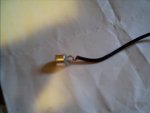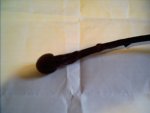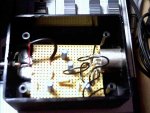Talk about a piece of shit...
I just built a phantom powered ECM, plugged it in using a Radio Shack cable, and viola, major buzz.
Obviously, I thought something was wrong with my assembly, so I started checking the circuit, etc. No problems!
Then, from some reason, I decided to try a different cable. Quite as they come. Tried a different Radio Shack cable - buzz.
That's really strange. These cables work with my dynamics and with my MXL mic just fine, but nonetheless, what a piece of shit!

I just built a phantom powered ECM, plugged it in using a Radio Shack cable, and viola, major buzz.
Obviously, I thought something was wrong with my assembly, so I started checking the circuit, etc. No problems!
Then, from some reason, I decided to try a different cable. Quite as they come. Tried a different Radio Shack cable - buzz.
That's really strange. These cables work with my dynamics and with my MXL mic just fine, but nonetheless, what a piece of shit!







